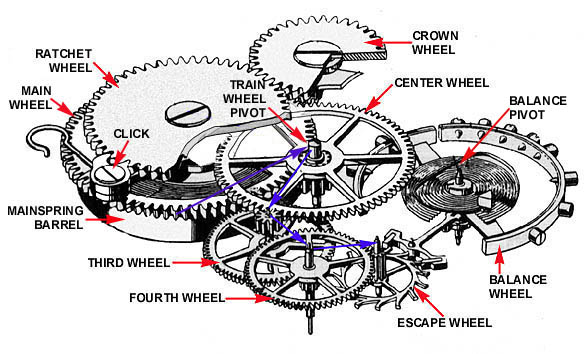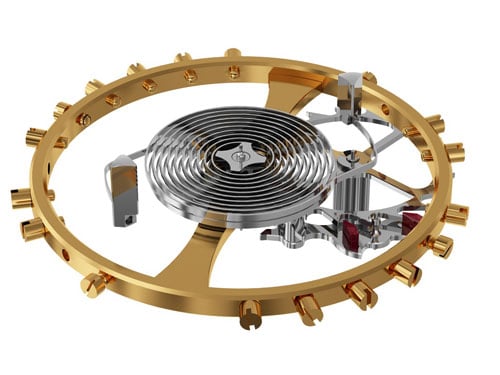In my last post, I have explained how a mechanical watch works. To recap, a mechanical watch works basically on potential energy converted to kinetic energy. This process is done through mainly 4 important parts inside the watch case which is known as "movement". It is also known as heart of a watch where all parts are held tightly together to induce momentum required to show time.
The 4 important parts of Mechanical watch are:
1. Mainspring or Coil
2. Wheel Train or Gear Train
3. Escapement Wheel
4. Balance Wheel or Balance Spring
When the Mainspring is wound by the outside part called "crown" attached to the case of the watch, the power stored in it is slowly released through Wheel Train gears. The power is released with precision by the Escapement Wheel which in turn sets the Balance Wheel in motion. The balance wheel oscillates in a precise manner when the power is unlocked by Escapement Wheel. This oscillation produces the 'tick' or motion required for the second, minute and hour gears of Wheel train and makes the watch run.
However, as the power stored in the Mainspring nears the exhaustion, the watch starts losing time and ultimately stops. Then one needs to wind the crown again to power the Mainspring. This process has to be repeated frequently depending on the quality of the Mainspring used in the watch.
Many people found this process is cumbersome and irritation. Hence, self-winding or Automatic winding mechanism was invented. Automatic or Self-winding watch uses a Rotar which rotates with the natural movements of hand and winds the Mainspring to power the watch. Normally when an modern automatic watch is worn for 6-8 hours, it produces sufficient power to run the watch for 24 to 36 hours. So, the watch functions accurately even while it is not in use.

Swiss watchmaker, Abraham-Louis Perrelet said to have invented the self-winding mechanism in pocket watches in 1770s, which was later improved upon by Abraham-Louis Breguet in 1780s.
Till the invention of Quartz Watches in 1970s, automatic watches were very popular. Quartz technology which used battery power to sustain the watch functioning, rendered winding mechanism unnecessary.
However, the Automatic watches have come back to fashion due to their Eco-friendly nature and craftsmanship involved in the medium to high end segment of wrist watches.
In my next blog, I will endeavor to explain how a quartz watch functions.. till then..
Cheers,
M G Kamath



